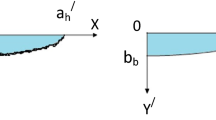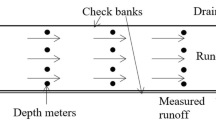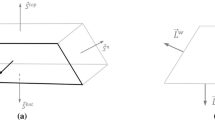Abstract
Border irrigation in Australia is characterised by excessive run-off and variable water use efficiencies. This paper discusses an analytical irrigation model that, because of its simplicity, represents a tool for improving water management in border irrigation. Infiltration data on four replicate 75-m2 plots were obtained from one irrigation of perennial pasture on a duplex, red-brown earth. Infiltration was characterised by high initial and low final rates. Kostiakov, modified Kostiakov, Horton, Philip and linear infiltration functions were fitted to the data. The linear function fitted the data well, and the parameters have physical interpretation. Consequently, an analytical kinematic wave model of border irrigation that incorporates the linear infiltration function is discussed. The analytical model was compared to more complex numerical models of border irrigation. The analytical model does not require a computer and performed sufficiently well to have application for border irrigation management in the field.
Similar content being viewed by others
Author information
Authors and Affiliations
Additional information
Received: 6 January 1993
Rights and permissions
About this article
Cite this article
Austin, N., Prendergast, J. Use of kinematic wave theory to model irrigation on cracking soil. Irrig Sci 18, 1–10 (1997). https://doi.org/10.1007/s002710050038
Issue Date:
DOI: https://doi.org/10.1007/s002710050038




